Characters

A Prato Giovanni Battista (1812-1883)
Politician and leading figure of Trentino socialism, man from the Resistance, deputy from 1958 until 1976.Nationally he had important roles like Chairman of parliamentary committees at the chamber of deputies (constitutional Affairs committee, Justice, Labour). In the ”committee of 19” he brought his strong legal knowledge in support of an overall vision and a global solution system for the south-Tyrolean issue.
Speaker of the Chamber of deputies on the constitutional draft law about the second Statute of autonomy, given his position in the left (Italian) socialist party (PSI), he played a key role in the relationship with the communists, who abstained in vote on the Package and voted instead in favour of the second statute.
(SOURCE: M.Marcantoni, G. Postal, Autonomy, history and meanings)
Picture: Syrio, CC BY-SA 4.0, via Wikimedia Commons

Habsburg
It was a German dynasty that reigned over Austria from 1278 until 1918 and that got its name from the castle of Habichtsburg, then Habsburg in the canton of Aargau in Switzerland. The dynasty was able to rule Austria over the centuries and was then called to the role of Imperial House in 1438, except for brief interruptions. Following the death of Margherita Maultasch in 1363, the last descendent of the dynasty of the counts of Gorizia-Tyrol, the Habsburg lineage took possession of the county of Tyrol and as such became “lawyer” that is protector, of the episcopal principality of Trento.
(SOURCE: M.Lando, M.Marcantoni, Words of autonomy)
Picture: Araldo Asburgo

Battisti Cesare (1875-1916)
Politician, geographer, journalist, leader of the socialist movement in Trentino. In Trento, deputy of the Tyrolean Assembly at Innsbruck and of the Austrian parliament in Vienna, he committed himself during the last years of the century for a federalist transformation of the Austro-Hungarian Empire and the autonomy of Trentino. His political action in this sense is illustrated in his 1901 pamphlet “an autonomist campaign”. The rearmament of the European States after 1905 made this goal impossible to reach and Battisti was convinced that it was necessary to overthrow the Austro-Hungarian Empire as a priority. Hence his commitment to the Italian army during the Great War, up to the moment of his capture and execution in a pit of the Buonconsiglio castle in Trento in 1916.
(SOURCE: M.Lando, M.Marcantoni, Words of autonomy)
Picture: Unknown author, Public domain, via Wikimedia Commons

Ballardini Renato (1927)
Politician and leading figure of Trentino socialism, man from the Resistance, deputy from 1958 until 1976.Nationally he had important roles like Chairman of parliamentary committees at the chamber of deputies (constitutional Affairs committee, Justice, Labour). In the ”committee of 19” he brought his strong legal knowledge in support of an overall vision and a global solution system for the south-Tyrolean issue.
Speaker of the Chamber of deputies on the constitutional draft law about the second Statute of autonomy, given his position in the left (Italian) socialist party (PSI), he played a key role in the relationship with the communists, who abstained in vote on the Package and voted instead in favour of the second statute.
(SOURCE: M.Marcantoni, G. Postal, Autonomy, history and meanings)
Picture: Ballardini Renato

Berloffa Alcide (1922-2011)
Born in Trentino, he moved to Bolzano (Bozen) when he was very young. First councilman and then deputy, elected in the DC (Christian Democracy) lists, for several legislatures.
Key personality in the South Tyrolean story and man of dialogue, he dedicated his whole life searching for the conditions for ethnic pacification in South Tyrol. He was one of the fathers of the Package, first in the committee of 19 and then in the long negotiation, both domestic and international, who brought to the approval of the Package and of the second statute. He had an equally determining key role as Chairman of the committee of 12 and the committee of 6.
(SOURCE: M.Marcantoni, G. Postal, Autonomy, history and meanings)
Picture: Berloffa Alcide

Bonomi Ivanoe (1873-1951)
Politician of socialist formation, he was then part of the moderate section. He was Prime Minister from June 1921 until February 1922. After the fascism he was President of the Central National Liberation Committee and from June 1944 he was Prime Minister. At the end of the war he was replaced by Ferruccio Parri. After the Paris Agreement, the Prime Minister, Alcide de Gasperi, gave him the presidency of the Committee of Experts, who prepared the first autonomous Statute, approved later on by the Constituent Assembly.
The other members of the Committee were:
Luigi Einaudi, Gaspare Ambrosini, Tomaso Perassi, Giovanni Uberti ed i Consiglieri di Stato Silvio Innocenti e Antonio Sorrentino.
(SOURCE: M.Marcantoni, G. Postal, Autonomy, history and meanings)
Picture: George Grantham Bain, Public domain, via Wikimedia Commons
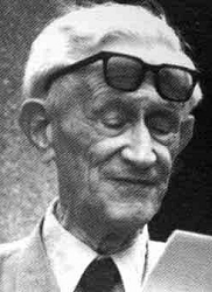
Chiocchetti Valentino (1905-1990)
Headmaster and intellectual in Rovereto, he was one of the leaders of ASAR, whose magazine “Our autonomy” he directed for many years, and he was one of the major theoretics of the autonomism, interpreted in a regional way.
(SOURCE: M.Lando, M.Marcantoni, Words of autonomy)
Picture: Chiocchetti Valentino
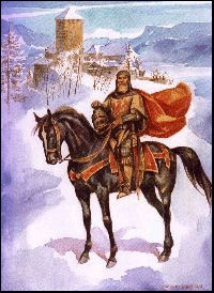
Counts of Tyrol
Since the time of Charlemagne, the king was a lawyer or defender of the Church. That’s why the local churches gave the protection of their rights in fief to a local noble who so took over the role of lawyer. Between 1140 and 1150 the counts of Tyrol castle became lawyers of the bishopric in Trento, a role that that dynasty kept until its extinction that happened with Margherita Maultasch in 1363. From that moment the Habsburgs became lawyers of the bishopric and therefore, theoretically, defenders of its autonomy and sovereignty.
(SOURCE: M.Lando, M.Marcantoni, Words of autonomy)
Picture: Counts of Tyrol
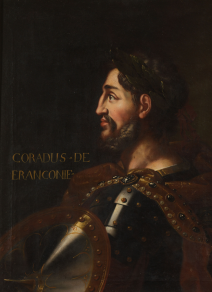
Corrado II il Salico (990-1039)
Emperor of the Holy Roman Empire, on 31st May 1027, with his diploma dated from Brixen, he granted the bishop of Trento princely powers over his dioceses, resulting in the birth of the bishopric of Trento, territory with its own sovereignty. Corrado il Salico’s diploma is lodged in the State Archive of Trento. It should be noted though that 23 years before, on 9th April 1004, king Henry II (Saint Henry the Exuberant) had signed a document in Trento in which he gave the bishop the temporal power on the “comitatus” that means the county of Trento. Corrado II probably chose to confirm him again in order to avoid controversy, widening the bishop’s powers giving him in addition the county of Bolzano and of Venosta valley. Within the scope of the imperial politics, creating bishoprics, in particular those of Trento and Bolzano, the aim was to entrust a state, so to speak autonomous and not bound by dynasties because ruled by bishops, with a territory of capital strategic importance for the connection between the Latin and Mediterranean area with the German one through the Alps.
The creation of the bishopric represented eventually the launch of local self-governance.
(SOURCE: M.Lando, M.Marcantoni, Words of autonomy)
Picture: Corrado II il Salico
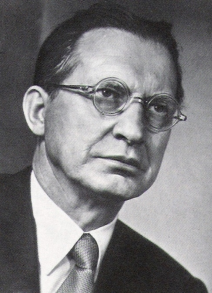
Degasperi Alcide (1881-1954)
Statesman who, in the first part of his life, was important as leader of the popular party in the city council of Trento, in the Austrian Assembly and Parliament. After the Great War he was deputy of Parliament in Rome for the popular party; he was persecuted during the fascism and then deputy for the Christian Democracy party in the Constituent Assembly and Prime Minister. Right during this period (1945-1953) he sealed the Trentino and South Tyrol regional autonomy’s fate with the signature of the Degasperi-Gruber Pact
(SOURCE: M.Marcantoni, G. Postal, Autonomy, history and meanings)
Picture: Unknown author, Public domain, via Wikimedia Commons
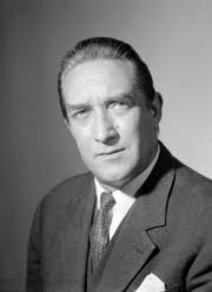
Dalvit Luigi (1921-1981)
Leading figure of the Christian Democracy Party (DC) in Trentino, provincial secretary from 1948 until 1958, DC group leader in regional Council and President of the regional Government from 1961 until 196, later elected Senator in the electoral college of Mezzolombardo until 1976. His nomination to presidency of the regional government- after the ”Odorizzi time period”- brought a significant improvement in the relationships between people from Trentino and from South Tyrol. His contribution in the Committee of 19, in comparison with SVP (popular party of South Tyrol), was very important, especially as President of the Subcommittee on legal Affairs, delegated to develop the proposals for the transfer of responsibility from the Region to the Provinces.
(SOURCE: M.Marcantoni, G. Postal, Autonomy, history and meanings)
Picture: Dalvit Luigi
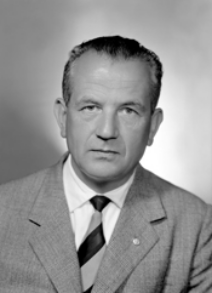
De Unterrichter Guido (1903-1979)
DC spokesperson in Trentino, from 1948 regional counselor and after that until 1968 senator, elected in the electoral college of Mezzolombardo. On 20th September 1943, a few days after the Alpenvorland establishment, the Committee for National Liberation of Trento was founded in his studio. As a member of the committee of 19, he made a difference in processing the solution proposals for the South Tyrol issue.
(SOURCE: M.Marcantoni, G. Postal, Autonomy, history and meanings)
Picture: De Unterrichter Guido
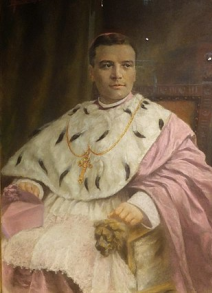
Endrici Celestino (1866-1940)
He was elected Prince-Bishop in 1940 (last Prince-Bishop nominated by the emperor) and he gave to the aciton of the catholic movement in the economic, social and political field. One of his confidants was Alcide Degasperi. During the Great War he was exiled because accused of having antiaustrian feelings.
(SOURCE: M.Lando, M.Marcantoni, Words of autonomy)
Picture: Casa Alcide de Gasperi museum, Public domain, via Wikimedia Commons

Francesco Giuseppe (1830-1916)
Emperor of Austria and Hungary since 1848; his long reign marked an era and his death represented the verge of extraordinary social and political transformations in Europe. When visiting Trento on 13th April 1871, he was given a memorial signed by 251 municipalities, by personalities and representatives of the population to address the difficult situation in Trentino and the necessity of autonomy. Following this initiative the Government of Vienna created a project of autonomy that yet didn’t have much success. It should be remembered that the concession of some sort of self-government to a national group within the Empire would have determined the acceptance of similar revendications of other populations, jeopardizing the State stability as a consequence.
(SOURCE: M.Lando, M.Marcantoni, Words of autonomy)
Picture: Koller Tanár Utódai, Public domain, via Wikimedia Commons

Gamper Michael (1885-1956)
South Tyrolean canon. During the fascism he was, together with Josef Noldin, the inspirer and organiser of the secret “Katakombenschulen” (“schools of catacombs”), that provided teaching in German, officially forbidden. On the occasion of the Options he chose the Italian citizenship. He founded the publishing house “Athesia” and the daily newspaper “Dolomiten”. In one of his famous editorials of 28th October 1953 he reported the “Todesmarsch der Südtiroler” (death march of the South Tyrolean), stigmatising the actions of the Italian government towards the South Tyrolean population, because of what was considered a politics of immigration tending to the italianization of South Tyrol. At his funeral, that took place on 19th April, there were more than 30000 people.
(SOURCE: M.Marcantoni, G. Postal, Autonomy, history and meanings)
Picture: Gamper Michael

Gruber Karl (1911-1995)
Austrian Ministry of Foreign Affairs who, when in Paris, as part of the Peace Conference, after the Second World War, signed with Italian Prime Minister Alcide Degasperi the pact- called indeed Degasperi-Gruber Pact- for the defense of South Tyrolean people in Italy
(SOURCE: M.Marcantoni, G. Postal, Autonomy, history and meanings)
Picture: Gruber Karl

Hofer Andreas (1767-1810)
He’s considered the hero of Tyrolean people. Host of Passiria valley (Passeiertal), he became the leader of Tyrolean Schützen (among whom also quite a few people from Trentino) in the war against the French-Bavarians troops that were occupying the Tyrol. After some early victories, during a battle on Bergisel, the mount near Innsbruck, on All Saints’ day in 1809, he was defeated and his army was scattered. Hofer took refuge on the mountains of Passiria valley but, betrayed, he was arrested and brought to Mantua, where he was shot on February 20, 1810.
(SOURCE: M.Marcantoni, G. Postal, Autonomy, history and meanings)
Picture: Franz Defregger, Public domain, via Wikimedia Commons
Innocenti Silvio
Prefect of Bolzano who presented an organic project for an autonomous regional Statute in June 1946, by commission of the Italian Government and that became then the baseline for the next projects. The prefect Innocenti, as a State councillor, was also part of the study committee presided by Ivanoe Bonomi.
(SOURCE: M.Lando, M.Marcantoni, Words of Autonomy)

Kessler Bruno (1942-1991)
Politician in Trentino, he was regional counselor for the DC from 1956 until 1976, year during which he was elected as deputy and then senator. From 1960 until 1973 he was President of the Province and after, until the election as deputy, President of the Region. During the years of his presidency he elaborated the provincial urban plan, he promoted the establishment of the University of Trento, he gave his important contribution to the overcoming of the first autonomous Statute and to the implementation of the second one, through a particularly engaged presence in the Committee of 12. He’ s also remembered for the so-called “Kessler Plan” in 1960 as an attempt to solve the South Tyrolean issue by giving more power and responsibilities to the Provinces at the expense of the Region.
(SOURCE: M.Marcantoni, G. Postal, Autonomy, history and meanings)
Picture: Kessler Bruno

Kreisky Bruno (1911-1990)
Austrian politician of the Socialist party, minister of the Foreign Affairs, then Chancellor. As Minister of Foreign Affairs he followed the South Tyrolean problem, first at the UN in 1959, 1960 and 1961, then in bilateral talks, especially with the Ministers of Foreign Affairs Antonio Segni and Giuseppe Saragat. With the latter, in Geneva in 1964 and in Paris in December of the same year, he had meetings that led to a comprehensive solution proposal for the South Tyrol issue, rejected by the Volkspartei.
(SOURCE: M.Marcantoni, G. Postal, Autonomy, history and meanings)
Picture: De Unterrichter Guido

Magnago Silvius (1914-2010)
Charismatic leader of the South Tyrolean German-speaking people and leader of the
Südtiroler Volkspartei (SVP), the gathering party of South Tyrol. He was regional councilman continuously from 1948 until 1988 and President of the Province of Bolzano from 1960 until 1989. His role was essential in the development and implementation of the second autonomy Statute, whose political and diplomatic process he followed step by step in Rome. His work within the Committee of 12 is also of particular interest.
(SOURCE: M.Marcantoni, G. Postal, Autonomy, history and meanings)
Picture: Unknown author, Public domain, via Wikimedia Commons

Marchetto Clara (1911-1982)
Leading exponent of the separatist aspiration, she joined later the ASAR and afterwards contributed to the constitution of the Trentino Tyrolean popular Party (PPTT). She was elected in regional council in 1948 but, except for the first session, she couldn’t take part in it anymore because her designation wasn’t validated. As a matter of fact, on 1st February 1949 she was arrested because considered illegitimately released by the allies in 1944 from the penitentiary of Perugia, where she was serving her life sentence. In 1940 she was sentenced by the special fascist court for espionage in favor of France. She was finally free in the autumn of 1949 and shortly after she left Italy to go live in Paris. In 1979 she published the book “There is no history of Trentino without Tyrol” ed. Pezzini
(SOURCE: M.Lando, M.Marcantoni, Words of Autonomy)
Picture: Marchetto Clara

Menapace Luigi (1906-1999)
Trentino politician, author of historical and political studies. Regional councillor during two terms from 1948 until 1956, first elected in the DC ranks and then as an individual. He was the first President of the regional Council. Earlier in 1946 he had been called in Rome by Prime Minister Alcide Degasperi to follow the preparatory stage of the first Statute of special autonomy in the border zone Office.
(SOURCE: M.Lando, M.Marcantoni, Words of Autonomy)
Picture: Menapace Luigi

Moro Aldo (1916-1978)
Italian statesman, deputy for the DC, repeatedly Minister and Prime Minister. In 1978 he was abducted and after fifty-five days he was killed by the red Brigades. He followed very closely the matter of autonomy when he was Prime minister and Minister of the Foregin Affairs, developing directly with Magnago the subjects of the Package and he defined the deadlines connected to the Package with the Minister of Foregin Affairs Kurt Waldheim on 30th November 1969 in Copenhagen in Denmark.
(SOURCE: M.Marcantoni, G. Postal, Autonomy, history and meanings)
Picture: Moro Aldo

Mussolini Benito (1883-1945)
Politician who forged the fascist movement and was head of the government from 1922 until 1943. In 1909 he settled in Trento to run the Chamber of Labour and a socialist weekly. A few months after he was expelled by the Austrian authorities and passed into Italy. After becoming head of the fascism and Prime Minister, he established a totally statist and centralised regime preventing any kind of territorial autonomy.
(SOURCE: M.Lando, M.Marcantoni, Words of Autonomy)
Picture: Mussolini Benito

Odorizzi Tullio (1903-1991)
Politician in Trentino, regional DC councilman from 1948 until 1968. After having the role of mayor of Trento, for a short period from 1946 until 1948, he was appointed first President of the Region: office that he kept for twelve years.
(SOURCE: M.Marcantoni, G. Postal, Autonomy, history and meanings)
Picture: Odorizzi Tullio

Piccoli Flaminio (1915-2000)
He was a Trentino DC leading personality, with important national roles. Journalist, founder of the local newspaper “il Popolo trentino”, which became then “L’Adige” in 1951. He was parliamentarian uninterruptedly from 1954 until 1994, DC national secretary in 1968, Minister of State Holdings from 1969 until 1972, DC group leader from 1972 until 1978, DC President - role previously played by Aldo Moro- after his barbaric execution, from 1978 until 1980, and again DC national Secretary from 1980 until 1982. His role on the autonomy issue was determining, first as a respected member of the Committee of 19 and after in the final decisions on the Package, when he was DC national Secretary.
(SOURCE: M.Marcantoni, G. Postal, Autonomy, history and meanings)
Picture: Piccoli Flaminio

Saragat Giuseppe (1898-1988)
Italian politician, leader and founder of PSDI, President of the Republic from 1964 until 1971. In more than one occasion he dealt with autonomy: first as Italian ambassador in 1945 in Paris, together with Degasperi signing the Pact with Gruber; later in 1964 as Minister of Foreign Affairs when-in Geneva and in Paris- he met Bruno Kreisky, with whom he arranged a comprehensive solution proposal for the South Tyrolean issue, rejected then by Volkspartei
(SOURCE: M.Marcantoni, G. Postal, Autonomy, history and meanings)
Picture: Mario De Biasi (Mondadori Publishers), Public domain, via Wikimedia Commons

Tolomei Ettore (1865-1952)
Politician and publicist, he voluntarily enrolled in the Italian army in 1915. At the end of the Great War he was nominated commissioner for Language and Culture in South Tyrol. He applied arrangements for South Tyrol that targeted the assimilation of the German element. He renewed the toponymy by replacing local names and surnames of the German families with the Italian equivalent names. In 1943 he was deported to Dachau and then to Thuringia, from where he came back at the end of the war.
(SOURCE: M.Marcantoni, G. Postal, Autonomy, history and meanings)
Picture: Tolomei Ettore

Vittorio Emanuele III (1869-1947)
King of Italy, in his crown message in January 1919, the day after the end of WWI he guaranteed “the highest respect of autonomies and local traditions” of the territories which became part of the Reign. The king’s commitment consisted therefore in keeping the self-government forms that Trentino and South Tyrol had in the Austro-Hungarian Empire. It was not so because the following fascist government forced a centrally controlled State.
(SOURCE: M.Lando, M.Marcantoni, Words of Autonomy)
Picture: Italiano: Generale dei Bersaglieri., Public domain, via Wikimedia Commons

Waldheim Kurt (1918-2007)
Austrian Politician, Minister of Foreign Affairs, UN Secretary-General and then President of the Austrian Republic. As Minister of Foreign Affairs he arranged the work plan, strictly connected with the Package, with the Minister of the Foreign Affairs Aldo Moro on 30th November 1969 in Copenhagen.
(SOURCE: M.Marcantoni, G. Postal, Autonomy, history and meanings)
Picture: Waldheim Kurt

